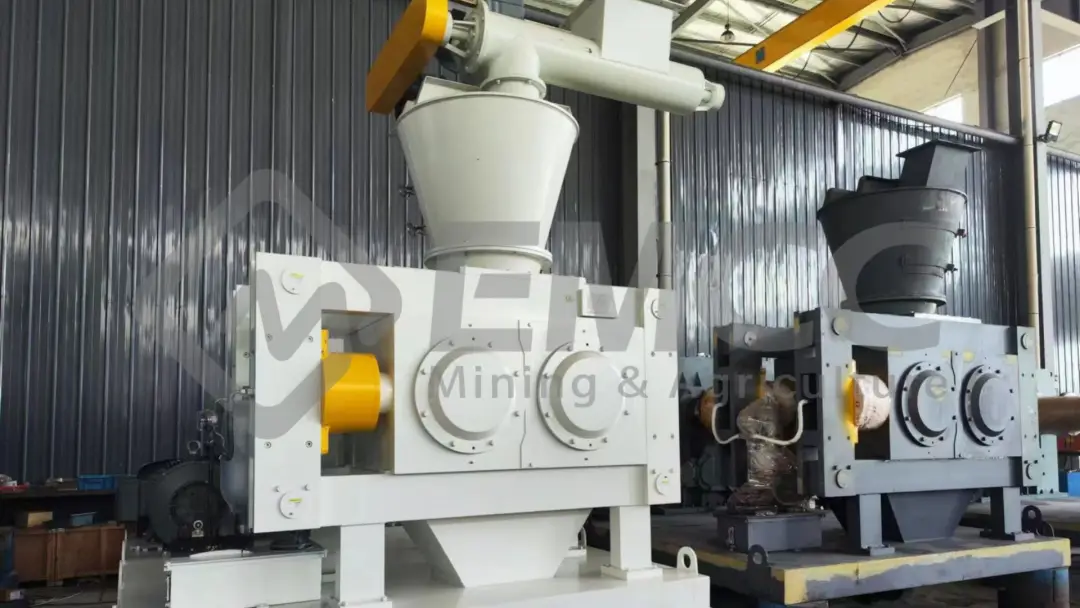Overview of dry granulation technology
Technical principle
Dry granulation is a process of directly pressing dry organic materials into granules by physical extrusion, compression, etc. No wetting agent or binder is required, and the original nutrients and physical properties of the materials are retained.
Process characteristics
- High cost-effectiveness: The dry granulation process is simple, energy-saving, and no additional drying steps are required, thereby reducing production costs.
- Good nutrient retention: Since no wetting agent is required, dry granulation can effectively retain nutrients such as nitrogen, phosphorus, and potassium in organic materials, making fertilizers easier for plants to absorb and utilize.
- Strong stability: The granules made by the dry method have high hardness and density, good stability, and are easy to store and transport.
- Environmentally friendly: The dust pollution generated during the dry granulation process is relatively small, which is beneficial to environmental protection.
Application effect
Dry granulation is suitable for organic materials with low moisture content, such as straw, sawdust, etc. The granular fertilizer produced is suitable for long-term fertilization, which can continuously provide nutrients for crops and promote crop growth.

Overview of wet granulation technology
Technical principle
Wet granulation is the process of adding an appropriate amount of wetting agent or binder to organic materials and making the materials into granules through stirring, kneading and other processes. The addition of wetting agent helps the molding and stability of material particles.
Process characteristics
- High molding rate: The addition of wetting agent during wet granulation significantly improves the molding rate of material particles and improves the quality of particles.
- Less dust pollution: During the wet granulation process, the material is in a wet state, which reduces the generation of dust and improves the working environment.
- Wide range of application: Wet granulation is suitable for organic materials with high moisture content, such as livestock and poultry manure, kitchen waste, etc.
- Complicated equipment: Compared with dry granulation, wet granulation requires more equipment and operating steps, and the investment and maintenance costs are higher.
Application effect
The granular fertilizer made by wet granulation has a high moisture content and a certain toughness, which is conducive to rapid decomposition and release of nutrients, and is suitable for the growth stage of crops with urgent nutrient needs. At the same time, wet granulation can effectively reduce harmful microorganisms and pathogens in organic materials and improve the safety of fertilizers.

Comparative analysis of dry granulation and wet granulation
Cost and benefit
Dry granulation has obvious advantages in cost and benefit, and is especially suitable for large-scale industrial production. Although wet granulation has a higher molding rate and particle quality, the equipment and maintenance costs are also relatively high.
Applicable scenarios
Dry granulation is more suitable for organic materials with low moisture content and long-term fertilization needs; while wet granulation is more suitable for processing organic materials with high moisture content and the pursuit of rapid nutrient release.
Environmental protection and safety
The two granulation methods have different focuses on environmental protection and safety. Dry granulation reduces dust pollution, but attention should be paid to dust control during operation; wet granulation reduces dust generation by wetting the material, but the environmental protection and safety of the wetting agent must be ensured.
Conclusion
In summary, dry granulation and wet granulation are the two main granulation methods in organic fertilizer production, each with its own unique advantages and applicable scenarios. In actual production, the appropriate granulation method should be selected based on the properties of organic materials, production needs, and environmental protection requirements. At the same time, with the advancement of science and technology and the improvement of environmental protection requirements, organic fertilizer granulation technology will continue to innovate and improve in the future to meet the higher demands of agricultural production.



